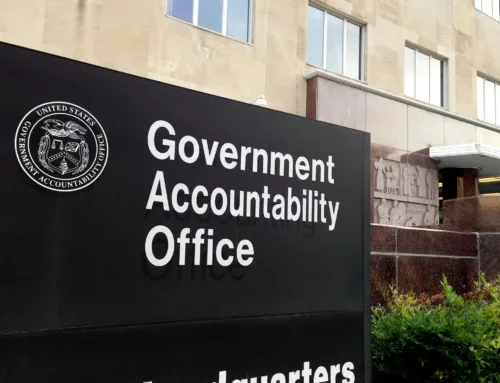Coal miners used canaries as an early warning system for toxic gases. If the deep hole of debt that policymakers are mining had a canary, it would have just keeled over. For the first time in 35 years, the main Social Security Trust Fund (Old Age and Survivors Insurance Trust Fund) will be underwater, taking in less money than it pays out to seniors.
While this year’s deficit is “only” $22 billion (out of more than $833 billion in benefits paid), it represents a structural problem that has just passed a tipping point. After a small ($5.1 billion) surplus in fiscal year 2019, the program heads deeper into the red, with an estimated deficit in FY2027 of more than $155 billion.
But what about all those years of surpluses? They must be in the bank, can’t the government just tap that? Indeed, the Trust Fund has more than $2.8 trillion in reserves, more than 100 times this year’s deficit. Except, it’s not so simple. By law, any surplus in the trust funds must be used to buy U.S. government bonds. But the years of trust fund surpluses have been masking the real size of the deficit in the government’s operating budget.
In almost every year since 1983, the operations side of the government (defense and other discretionary programs) has run a deficit that cumulatively comes to more than $15 trillion. During that same time, the Social Security and other trust funds have run a surplus of over $3 trillion. The total national debt (accumulated annual deficits) is now $21.2 trillion, of which $15.5 trillion is held by the public (individuals and foreign governments) and $5.7 trillion is held by the government itself, mostly through Social Security and Medicare. These trust fund assets are actually liabilities of the government on the nation’s balance sheet. When Social Security redeems $22 billion of their bonds to cover the FY2018 shortfall, Treasury turns around and borrows more cash to pay them off. Social Security used to mask the deficit (projected to be $804 billion this year); it is now adding to it.
Of course, Treasury doesn’t have to borrow more money. Policymakers could reduce spending, increase revenue, or sell assets instead. But we know what lawmakers have done recently: they have increased spending over legislated budget caps by hundreds of billions of dollars without offsets, and they have reduced revenue by more than a $1 trillion in tax cuts. Oof.
This change in Social Security’s fortunes comes at a bad time. While the economy has steadily grown in the decade since the Great Recession, there is no guarantee that growth will continue unabated. While weaker than many other recoveries, the current recovery has been one of the longest in the nation’s history; a downturn before too long seems inevitable. The longer-term fiscal scenario is even scarier. The nonpartisan Congressional Budget Office estimates that the budget deficit will grow from over $800 billion this year (4 percent of Gross Domestic Product) to more than $1.5 trillion in 2028 (more than 5 percent of GDP). During that same time, the debt held by the public (not including debt held by trust funds) will rise from 76 percent of GDP to 96 percent of GDP. The cost to service that debt – aka, interest on the loan – will soar from $316 billion (1.6 percent of GDP) to $915 billion (3.1 percent of GDP) over the same period.
For right now, most economic indicators are upbeat, which makes it easier for lawmakers to ignore the underlying fiscal realities. But the longer the country waits before doing something to address our budget problems, the more painful it will be economically and politically to make necessary changes. Without action, at some point in the future we will be facing some combination of interest rate spikes, high unemployment, high inflation, deep recession, collapse of asset values, and bankruptcies. The canary has died; it’s now up to lawmakers to realize this and act.










